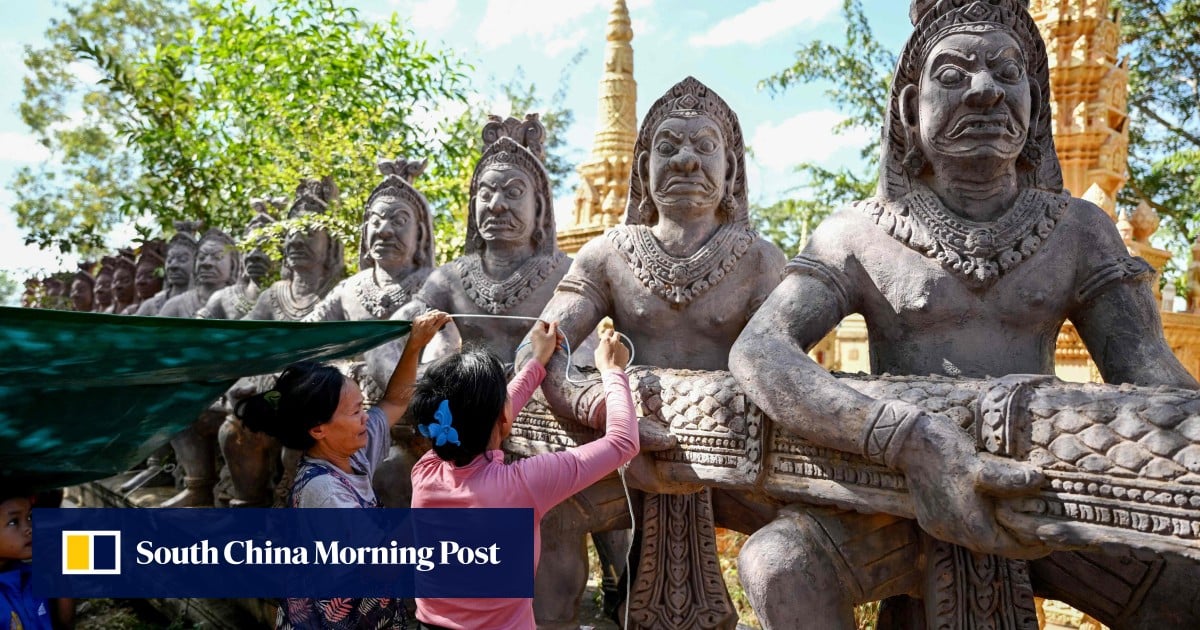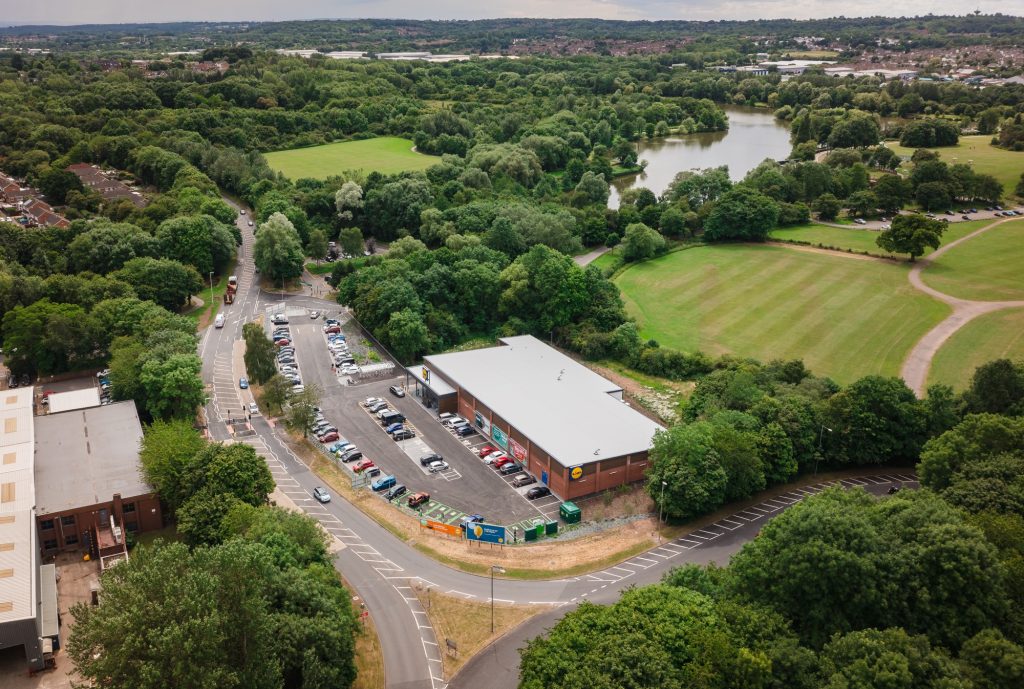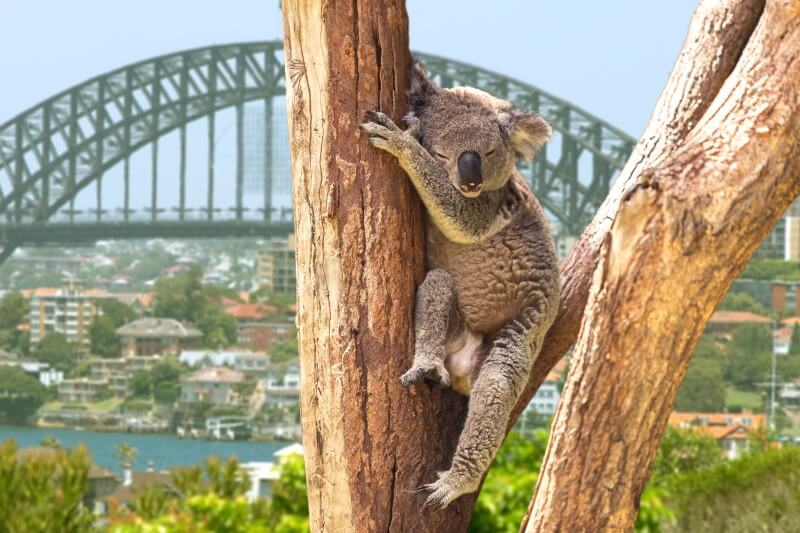
This post may contain affiliate links. We may receive a small commission, at no cost to you, if you make a purchase. Read Disclosure.
One of the things Australia is known for is its animals, predominantly, the deadly kind. While there are deadly animals in Australia, it’s important to remember Australia is the sixth largest country in the world by land mass, and therefore the likelihood of you encountering these deadly creatures is rare.
Australia has more deadly snakes than any other country, the largest crocodiles in the world, and many species of killer hairy spiders.
That’s just on land. In the ocean, you will find Box jelly fish that can kill you in eight minutes, Irukandji jellyfish which are so small you can’t see them, and extremely deadly species of cone fish and stonefish that you might not have heard of, and of course, bull sharks and great white sharks!
While the chance of encountering these animals is small, and the risks are low, there still is a risk, which is why we’ve prepared this guide to Australia’s most deadly animals so our traveller readers can travel informed.
 So deadly
So deadly
The Most Dangerous Animals in Australia
Australia is so dangerous, one of our Prime Ministers went for a swim one night and never returned. How does one lose a Prime Minister? Only a country swarming with insane predators can do that.
But you know what? Craig and I survived for over 40 years living in Australia without even one snake or spider bite.
So while this may all seem like scare mongering, it’s important to remember that these Australian animals can be avoided and you don’t have to fear Australia’s wildlife when travelling here.
Australian Snakes
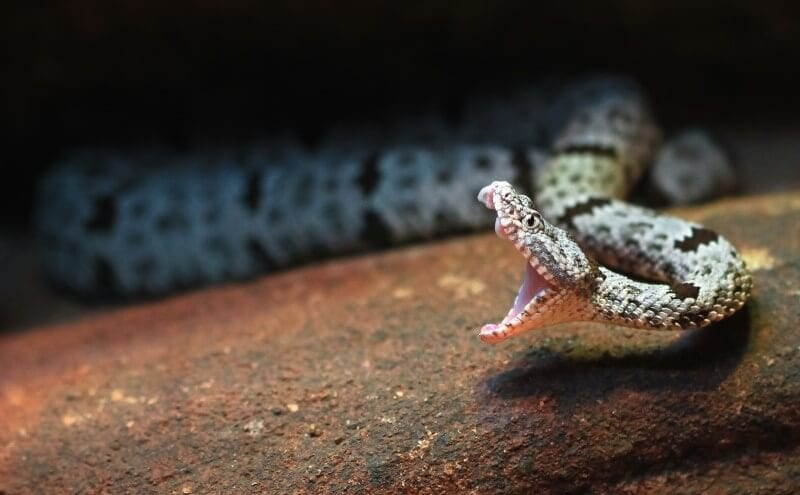 Scary snakes in Australia
Scary snakes in Australia
Wahoo. Yes, Australia has eight of the most deadliest snakes in the world. We learned a few things about snakes from traveling around the country and speaking with Rangers at national parks and in educational facilities.
Here are the most common types of snakes:
Venomous Snakes
- Eastern Brown Snake (Pseudonaja textilis). They are so named because they are brown, but can vary from light brown to almost black. They have a slender body with a small head. They are often found in open grasslands, farmlands, and even suburban areas. They are known to be fast-moving and can be aggressive if threatened.
- Tiger Snake (Notechis scutatus). It has black and yellow color patterns, often with distinct bands or blotches, kind of like a tiger (hence the name). The body is stout and it has a broad head. They are found in a variety of habitats, including grasslands, forests, and coastal areas. They can be aggressive if disturbed.
- Inland Taipan (Oxyuranus microlepidotus). They are a slender, light to dark brown snake with a narrow head. They are found in remote arid regions of central Australia and are rarely encountered by humans. They are considered the world’s most venomous snake.
- Coastal Taipan (Oxyuranus scutellatus). They are light to dark brown in color and typically larger than the Inland Taipan. They are found in coastal areas of northern and eastern Australia and can be aggressive if threatened.
- Death Adder (Acanthophis antarcticus). It has distinct bands or blotches and a stout body with a broad, flat head. They are highly venomous and found in deserts, woodlands, and grasslands. They are an ambush predator, but don’t worry, they are nocturnal.
Non-Venomous Snakes
- Carpet Python (Morelia spilota). They have unique color patterns and intricate markings. They are a large snake with a robust body and found in forests, woodlands, and urban areas. Often seen in roofs or sheds.
- Green Tree Snake (Dendrelaphis punctulata).They are bright green in color with a yellow belly and have a slender body and large eyes. They are found in rainforests and wet sclerophyll forests of eastern Australia. They live in trees.
What to do if you encounter a snake
If you see a snake, it’s best to leave it alone and move away slowly. If you are bitten by a snake, seek medical attention immediately.
Try to remember what the snake looked like, as this can help first responders identify the snake and give you antivenom if needed.
However, the chances of you getting bitten and then dying of a snakebite in Australia is low because:
- They’re afraid of you and will get out of your way as soon as they hear you. The only snake that doesn’t fear humans is the brown snake. You don’t want to mess with the browns. They’re the aggressive ones who’ll strike at whim. Kinda like the crocs.
- Aussie snake venom is super poisonous BUT the fangs of our snakes are very small, unlike other countries whose snakes have large fangs. This means the chances of our small fangs injecting far enough into the skin to do some real damage is slim. That’s why we recommend wearing boots, thick socks, and long pants when out in the bush. That hard protection saves a lot of people.
- It takes a lot of energy for a snake to inject venom. It tires them out so much that often they’ll bite as a warning and not release the venom.
- If you are bitten and remain still and apply the right first aid, the venom will travel slow enough to give you time to get the antivenom you need to save you.
Don’t fear the snake. They are beautiful animals. I promise you, it’s rare to see snakes.
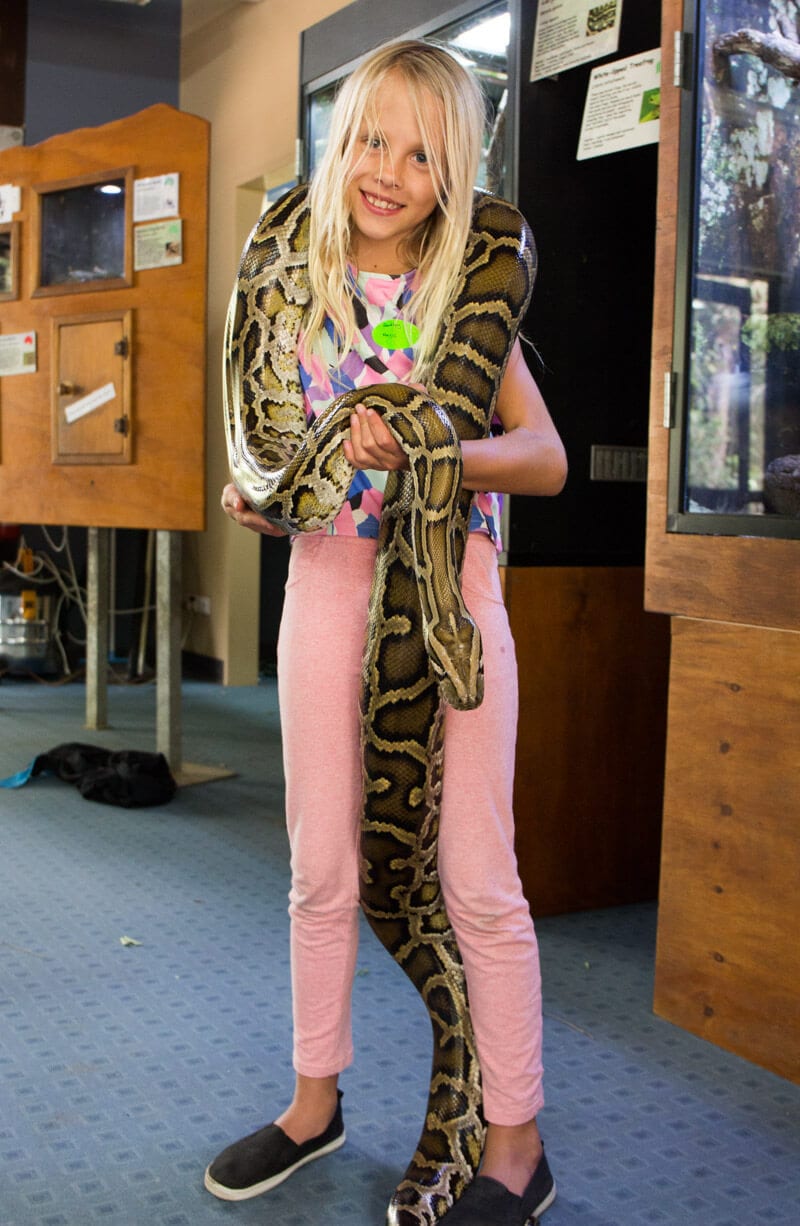 They’re friendly
They’re friendly
I love to hold them and wrap them around mine and my children’s necks – pythons that is. Don’t play with the other ones.
We traveled around Australia for 18 months and have explored it deeply in many ways and I think I’ve only seen about 5 snakes in the wild and never one brown!
Spiders
I hate spiders way more than snakes. They are a common presence in Australia’s households, in particular the creepy huntsman that likes to scurry across your living room floor as you’re watching TV.
Most tourists don’t encounter them though because hotels and vacation rentals always have a big clean before you get there.
Top tip: Always check your shoes before putting them on in Australia and perhaps don’t leave them outside.
Venomous Spiders
- Daddy Long Legs (Family Pholcidae). The most venomous spider in the world. Don’t worry, they are completely harmless as their fangs are way too tiny to hurt you! But their prey better get out of the way. They have long, thin legs and a small body and not considered dangerous to humans.
- Redback Spiders (Latrodectus hasselti). They are black with a distinctive red stripe on its back (females). Males are smaller and have more complex markings. They like hiding in sheds, garages, and under rocks. The female’s bite can be dangerous, causing significant pain, sweating, nausea, but they don’t bite unless disturbed. Red backs like to hide in your shoes, in old tires and under tables and playground equipment.
- Funnel-web Spiders (Atrax robustus). They have a shiny black body and are found in eastern Australia, particularly the Sydney funnel-web spider, which has highly toxic venom and can be fatal. They are aggressive when threatened. Males often wander in search of females, which is when they are most likely to encounter humans, but even so the chance of encountering one is rare.
Funnel Webs are exactly what you picture when you think of scary, deadly spiders. Black, large and hairy! The females are 10x more deadly than the males!
I have never seen one in the wild. Except for the legs of that one in the video above at the Binna Burra Hinterland lodge.
Craig had a couple in his swimming pool when he was growing up (yes they do swim). Just be careful picking up rocks and things in case they are hiding underneath them,
But, truly you don’t have to worry about them. No deaths since 1979 remember, and they are rare to see.
Non-Venomous Spiders
- Huntsman Spider (Family Sparassidae). The largest spider in the world, and just as fast. They are hairy with long legs and are usually brown. They are found throughout Australia and often seen in homes, on walls and ceilings (though not hotels that are cleaned daily). They are not deadly, but their bite can be painful.
- Orb-Weaving Spider (Family Araneidae). They are a large spider found all over the country, often in homes. They are not dangerous but their bite can cause pain and swelling.
- Wolf Spider (Family Lycosidae). They are often found in gardens and under rocks. They are active hunters and carry their eggs on their backs.
Crocodiles
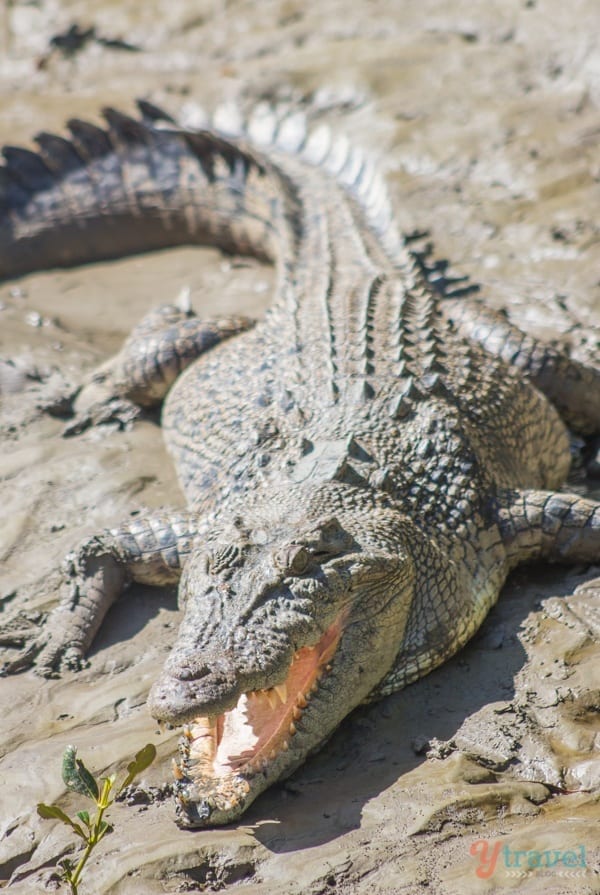 Yes. Scary
Yes. Scary
There are two types of crocodile in Australia; fresh water crocodiles and saltwater crocodiles.
The fresh water crocs, or freshies, are not usually aggressive and will stay out of your way.
The saltwater crocs are the ones you want to stay clear of. Salties are the largest living reptile in the world and apex predators. They are responsible for the majority of deaths caused by crocodiles and are highly aggressive.
Just never ever go swimming in the rivers where crocodiles are, especially salties. They are most commonly found in the northern territory (Top End) of the country, as well as the northern side of the East Coast and Western Australia.
When travelling in Australia, you can protect yourself from crocs by:
- Not ignoring the signs that warn you about them.
- Be careful of the beaches in the Top End as well, as the crocs can sometimes be swimming near there, especially if an estuary is close by. We saw croc tracks in the mangroves right near one of the beaches in the Daintree.
- Ocean attacks are rare, but I don’t take any chances with the crocs.
- Keep away from the river banks as well. Those cunning hunters, will see you way before you see them and will leap right out of that water and snap you from the river bank.
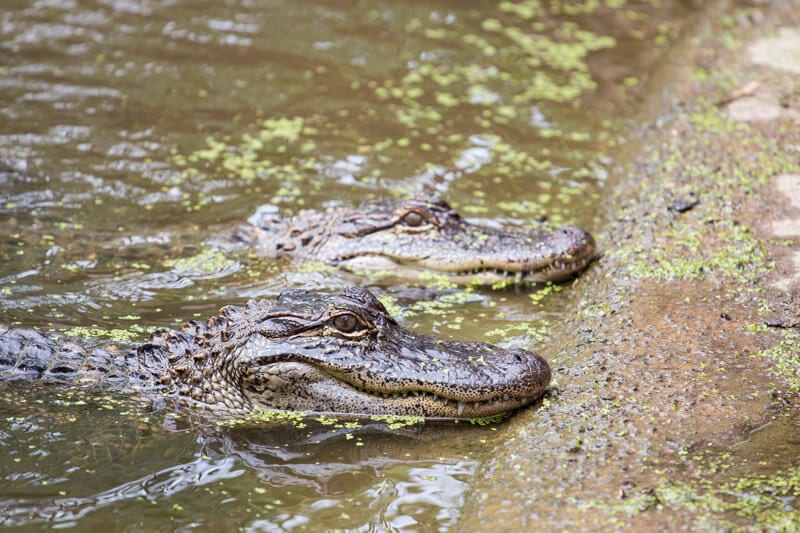 actually alligators
actually alligators
Craig and I nearly had heart failure one day watching a man throw rocks into the river with his little boy on the river bank, only twenty metres away from the jetty where you boarded for the croc watching tours.
Geez!! Do not do that!!
This is why we wrote this guide, to warn you not to do these things.
There are plenty of beautiful watering holes in the Top End. They look perfect for swimming and you may be so hot that you can’t resist.
Resist, unless it is clearly marked safe for swimming. Always ask a Ranger or a local.
The Top End also has freshwater crocodiles, which are so cute and pretty much harmless. But never assume, ask the locals. As long as you stay away from them (they are very shy) they will leave you alone.
The only rare attacks that have happened are because of the idiots that have cornered them and provoked them.
Box jellyfish and Irukandji
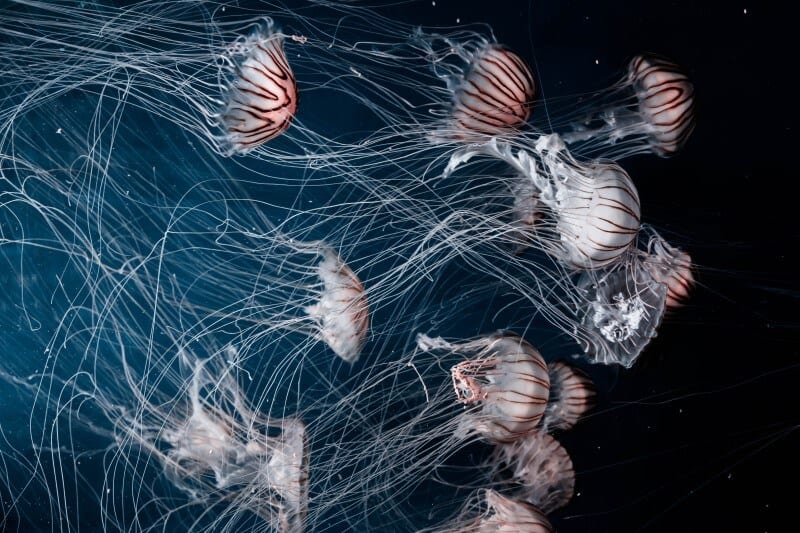 I give you 8 minutes to say your goodbyes
I give you 8 minutes to say your goodbyes
The box jellyfish are ocean critters who come out in the warm summer months when the ocean water around the 30 degree temperatures.
This makes for a nuisance when you visit the Top End, which is where they live.
I don’t recommend you visit the Top End during the summer anyway because of this and because it is very hot and wet.
Pay attention to the signs on our beaches. They will warn you of any dangers, especially stingers! They also have the months when the jellyfish are more likely to be in the waters on the signs.
If you do visit places like Cairns during jellyfish season (November to May), you will be given a stinger suit when you dive or snorkel the Great Barrier Reef. These will keep you protected from stings. Some of them have tentacles that can grow as long as 3 meters, so you will want this suit on to protect your legs.
Box jellyfish account for (at time of writing) 79 deaths, and Irukandji jellyfish account for 2 deaths, since records began in 1883.
It sounds a lot, but still less than one death per year, more like just half a death per year.
Sharks
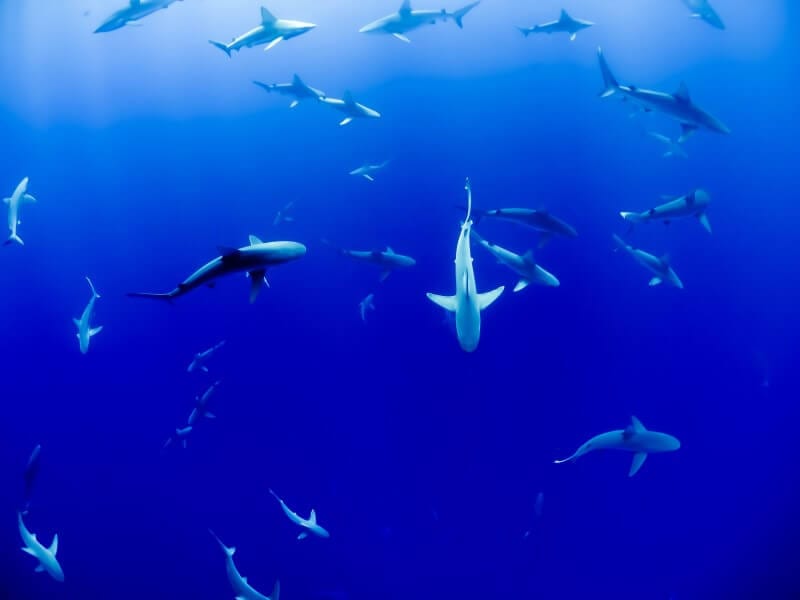 Sharks are everywhere
Sharks are everywhere
I’ve swam in beaches all around the country, and have rarely had a shark incident. The most dangerous sharks in Australia are bull sharks, tiger sharks, and great whites.
I think I’ve only ever been pulled out of the water once. Kalyra was having a surfing lesson and the lifeguards spotted a suspicious animal. They had us out of the water super fast.
Yes, shark attacks happen, but they don’t happen as often as you think.
Try not to look like a seal and don’t swim at dawn or dusk.
Good news is our lifeguards are awesome at keeping you safe. Just listen to them!
Rip tides are more dangerous than sharks in our beaches. If you are not a strong swimmer then stay close to shore, ask a local if there are any rips to be aware of, and always swim between the flags.
This is the area that is monitored by the lifeguards and generally have the safest water conditions.
If you are a surfer though, you won’t be allowed here.
I’m sure you already know a lot about water safety, and aren’t scared of sharks, so this post is probably not for you.
Kangaroos and Koalas
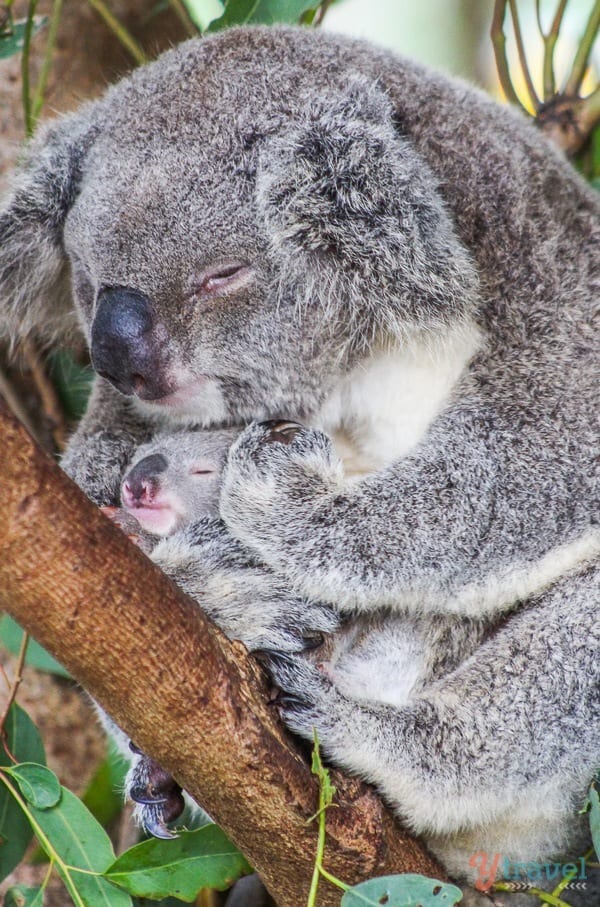 Not as scary as drop bears
Not as scary as drop bears
Yep, even our precious wild kangaroos and koalas can give you a great old fight.
Doped out koalas can be ferocious fighters and we don’t call them boxing kangaroos for nothing.
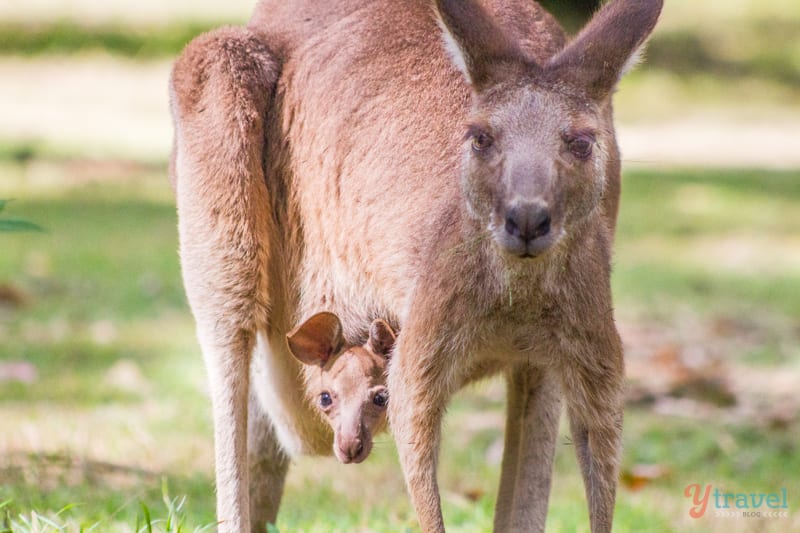
I have been a witness to a friends child getting a (gentle) punch on the head by a kangaroo and Craig’s sister was beat up a little when she was little. (No one was seriously injured, and yes Australians will laugh at things like this!)
Even those rarely sighted cassowaries can slice you from head to toe with one kick.
Ticks
The most haunting dangerous animal that often gets forgotten about is the tick.
I remember the day a tick buried itself into my leg in Narooma and I ran down the street howling and screaming for the nearest medical clinic to “get this thing outta me!”
I once had tick bite fever in Africa, and I’ll never forget it, so I’m very wary of ticks. With all the dangerous man eating animals in Africa, it was a little tick I never saw that took me down and made me think I was going to die.
I’m still glad I went to Africa because it was AWESOME, and full of beautiful memories and adventurous stories to share, but it’s always the smallest creatures that carry the biggest punch!
The Australian paralysis tick (Ixodes holocyclus) is responsible for most tick illnesses in Australia and can cause paralysis by injecting neurotoxins into its host. They are more dangerous to animals though, and usually cases of tick bites are recorded on live stock and pet dogs.
They are also rare. They’re only really found in a 20-kilometre wide stretch on the eastern coastline of Australia.
Blue-Ringed Octopus
The blue-ringed octopus is the most dangerous octopus in the world, and can be found in coastal waters from southern Queensland to southern New South Wales.
They are small octopuses, growing to around 22 centimeters long, and have 50-60 blue rings on the mantle as a warning sign to predators. They aren’t considered aggressive though, and usually hide under rocks and hunt at night.
However, if you do disturb one and get bitten, you need to call the emergency services immediately, as their venom is 1,000 times more potent than cyanide, and there’s no antivenom.
Ostriches, Emus, and Cassowary
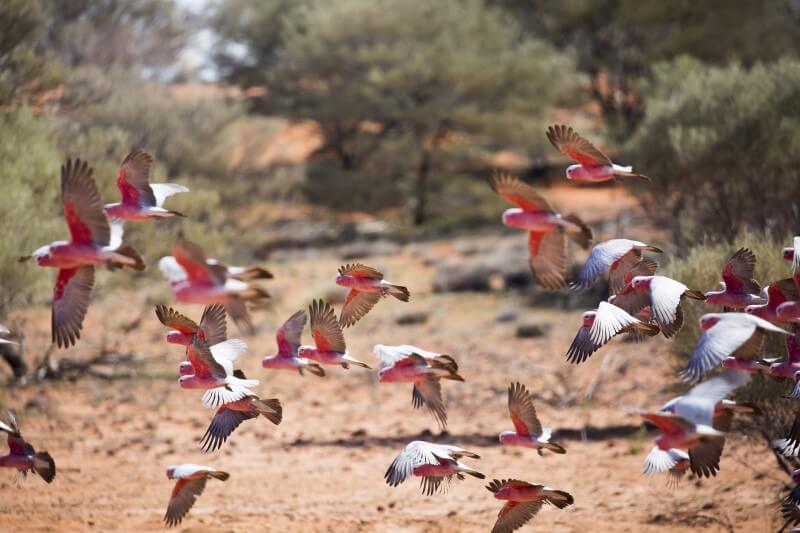 Just let the galahs be abundant
Just let the galahs be abundant
While it’s unlikely to run into snakes and spiders, one animal you can’t escape from in Australia is the bird life. The country is overrun with galahs, cockatoos, and lorikeets that are so loud at sunset you can’t hear the person talking beside you!
There aren’t dangerous birds in Australia, as such, but ostriches and emus can have a nasty temper if you get too close or ruffle their feathers (literally).
Another bird we have in Australia is the Cassowary, which is considered by some to be the most dangerous bird in the world and has been known to kill humans – well, specifically, one human. They can grow to six feet tall and have sharp tallons.
The one human death was in Australia in 1926, almost 100 years ago, and there’s only every been 150 reported attacks. The 16-year-old who died provoked the bird by striking it with clubs, so you know, don’t do that and you’ll be ok.
Another bird that isn’t dangerous, but causes a lot of chaos in Australia, are the magpies! Australia’s most feared bird. Just wear a helmet when walking through parks as they like to swoop at your head and pluck your hairs for their nest. Be sure to cover your eyes and you’ll be fine.
We were chased by a few birds on our road trip around Australia protecting their babies (as I tried to protect mine). It gave us loads of giggles.
Cone snails
Another venomous sea creature is the cone snail. These marine mollusks live in tropical regions around Australia and they usually prefer shallow water, making them a bit more of a risk than other creatures. However, they like to hide under stones, sand, and among sea weed.
They are called cone snails because they are shaped like an ice cream cone, and are brightly colored. They use a harpoon-like dart to stab their prey, such as worms, releasing a venom that causes paralysis.
All species of cone snails are toxic and some can kill a human, but usually a sting from a cone snail will cause intense pain, numbness, tingling, nausea, weakness, and may affect your bbody movement, vision, hearing, and speech or even paralysis.
If you are stung, call the emergency services immediately.
Should You Be Worried About Animals In Australia?
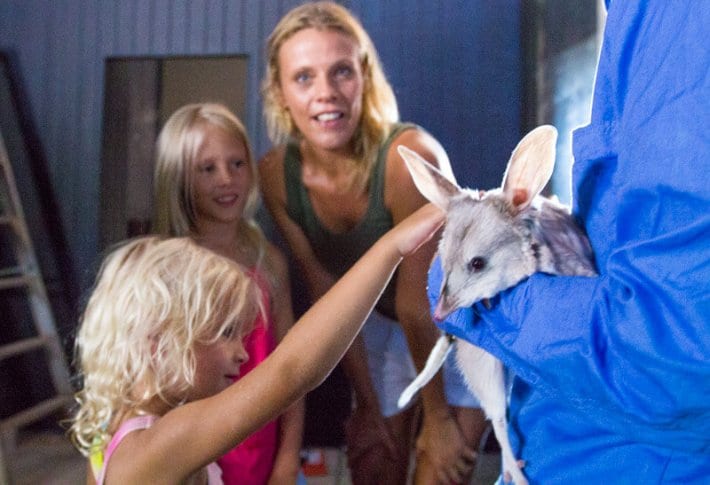 Bilby Experience
Bilby Experience
Generally you don’t have to worry about animals in Australia, as long as you’re aware of the dangers and don’t do anything to provoke any of the animals I mentioned above (I’m looking at you, father and son throwing stones in croc-infested waters).
I feel that I need to make a very important note here, as I am sure many people will only read the first part of this post and jump to the comments to lay out their best insults as to how I am fear mongering and RUINING tourism in Australia.
For the most part, I AM joking. Being facetious. Messing around. You get it.
Yes, I have heard horror stories, and yes, there are some animals that are to be feared, but for the most part, this is highly exagerated because that’s what we do as humans.
I wanted to write this to help improve tourism in Australia because you have no idea how many people are not visiting our beautiful country because they believe all of our animals will be lining up at the arrivals hall waiting to pounce!
Facts Don’t Lie: The truth about our animal related deaths in Australia
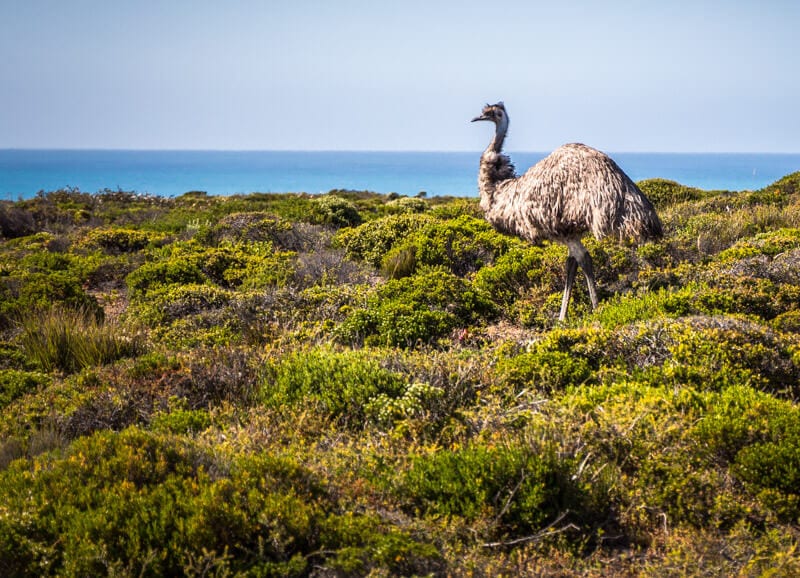 You will see many wild emus in South Australia. It’s the most we’ve seen in Australia
You will see many wild emus in South Australia. It’s the most we’ve seen in Australia
Australians are quite proud of the fact that the top 10 most deadly animals call the Great South Land home.
Just look how awesomely fierce we are!
The truth is:
- Australia’s dangerous animals kill about five people each year. We’re all bark and no bite!
- You actually have more chance of being killed by a horse or drowning. 300 people drown a year, for comparison!
- Nobody in Australia has died from a spider bite since 1979 after the successful introduction of antivenom for all native species.
- There have been 35 snake bite deaths recorded between 2000 to 2016, mostly men near their homes (23 of those by the brown snake and 1/5th of those were due to people trying to pick them up!)
- Three people die on average a year from a shark attack.
- A study in 2013 (the earliest stats I could find) by Charles Darwin University found that since 1971, there were about 2.8 attacks per year over of which only 0.6% were fatal. Australia has the highest density of saltwater crocs in the world, so those stats are pretty outstanding and prove we’re not that scary and we have great crocodile management programs in place!
In fact, statistics will show that more people are killed by vending machines falling on top of them than a crocodile attack. Most crocodile victims are found to have alcohol in their system and were playing Hero Games with their drunk buddies.
“I bet you $10 I can swim to the other side of this river.”
Snap! “I bet you, you can’t” goes the croc.
What To Do If You Encounter Wild Animals In Australia
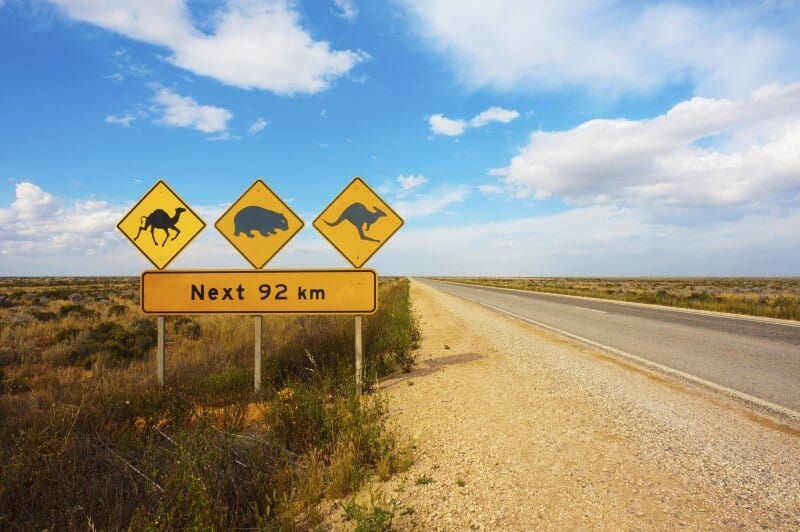 You’ll love our animal road signs
You’ll love our animal road signs
If you do encounter any of the animals I’ve mentioned in this guide, just let them be and be free. They’re more scared of you.
I know you want that selfie with the kangaroo, but get in his space and he may just bop you one.
Do you blame him? I’d want to do the same if someone was harassing me just for a few likes on social media.
If you do find that you have been stung or bitten, call 000 (that’s the emergency number in Australia) and seek medical attention immediately – you can never be too careful.
Try to make a note of the animal that hurt you and any characteristics to help them identify them, this will ensure they can give you the right antivenom if needed.
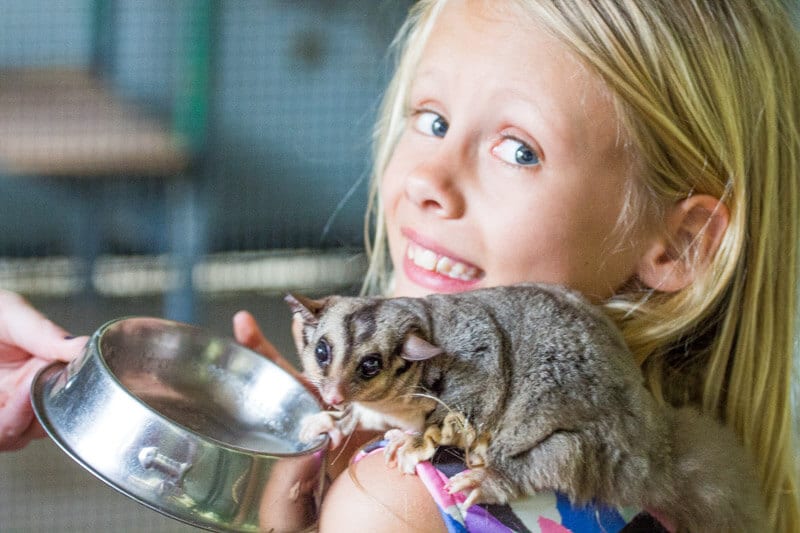
If you want to get up close to animals, there are plenty of animal sanctuaries in Australia where you can feed kangaroos and cuddle koalas, or meet quokkas, wombats, and other native Aussie animals.
These are all safe places to do so. The animals are closely monitored and protected by the rangers. They will also protect you!
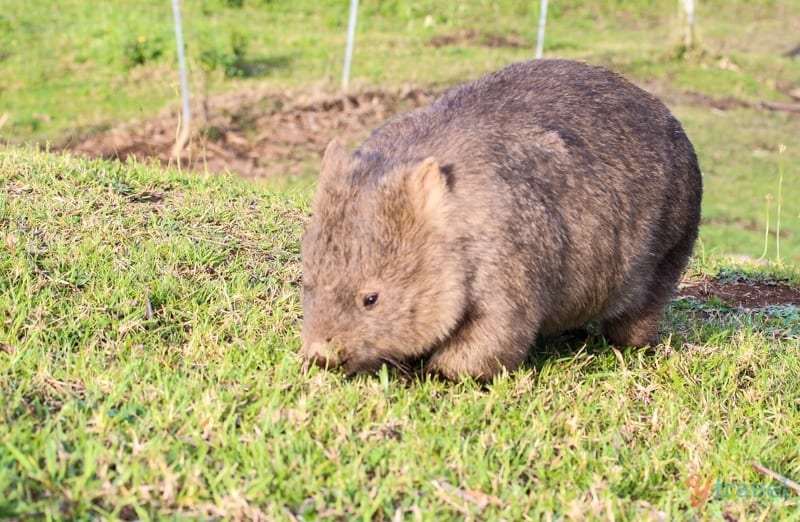 Wombat in Kangaroo Valley
Wombat in Kangaroo Valley
Just think of the amazing memory you have to share with your kids for the rest of their life of that time you both walked into the outback dunny and opened the lid to see a green tree frog staring at you (they are not dangerous by the way).
You both scream and grab onto each other running out the door deciding that perhaps a bush wee was preferable to sitting on the toilet, despite that fact hat that green tree frog is probably hiding from its predator in the toilet.
Or, that time you walked into the campground toilet early in the morning to see this little head poking up behind the cistern, only to realize upon close inspection that it was a small snakes head. You slowly back away and hold onto the evening’s wee for a bit longer.
But see how easily it is to walk away unscathed. You couldn’t do that with a grizzly bear! Our deadlies are small wimps!
Final Thoughts
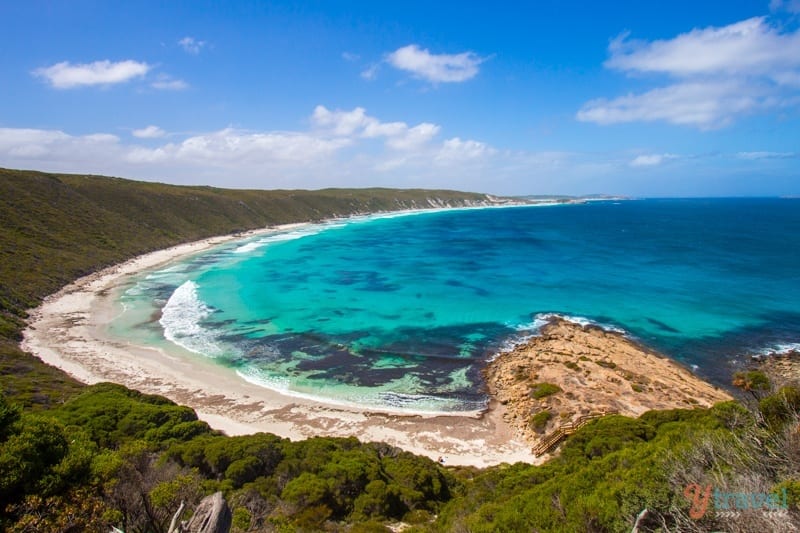 You really want to miss out on this?
You really want to miss out on this?
I always knew Australia had the reputation of being a dangerous place with all our deadly animals, but what has surprised me so much about living in America is the number of Americans who say it’s one reason they don’t want to travel to Australia.
It’s perfectly understandable to be afraid of something you don’t know, and Australia has a lot of native animals that you don’t find anywhere else in the world.
I am terrified of bears and the thought has crossed my mind several times not to travel to grizzly bear territory.
I think our deadliest animals are easier to manage and stay away from than an angry grizzly bear you may just happen to stumble across.
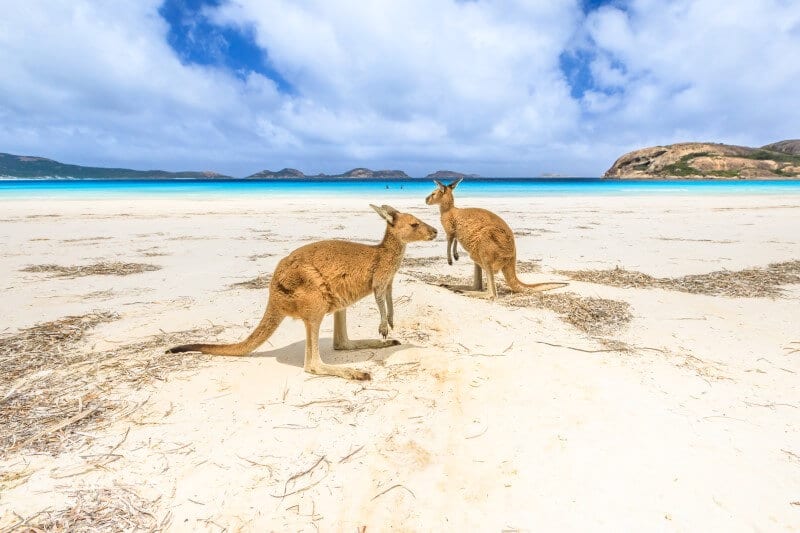 kangaroos on the beach in Esperance
kangaroos on the beach in Esperance
For our American friends, I would HATE for you to miss out on my beautiful, exotic, adventurous, friendly country because of the fear of our animals. You have just as fearsome animals in your own country; black bears, mountain lions, snakes that are better at killing you, sharks, alligators, buffaloes, moose, and did I mention grizzly bears?
Australia’s animals are nothing in comparison as they’re so spread out you barely notice them.
We traveled for 18 months around the country, in a very open (and small) travel trailer and were not attacked by any animals.
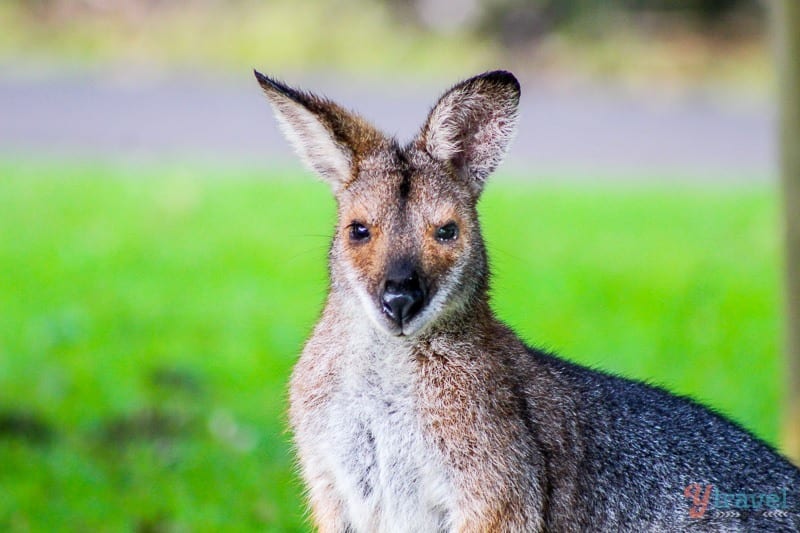 Wallaby outside our chalet in the Bunya Mountains
Wallaby outside our chalet in the Bunya Mountains
Despite all the fears I had about our road trip, I still went, and it was the best experience of my life. The memories are priceless, and as a result, I can say, there is no better country in the world to travel to.
Australia is stunning and exotic, wild and spacious, and filled with transformative experiences.
I’ve never met an American yet who has regretted their decision to overcome their fears and obstacles to travel to our Great South Land.
So don’t worry about our deadlies. You’re safe with them. Come on over to Australia.
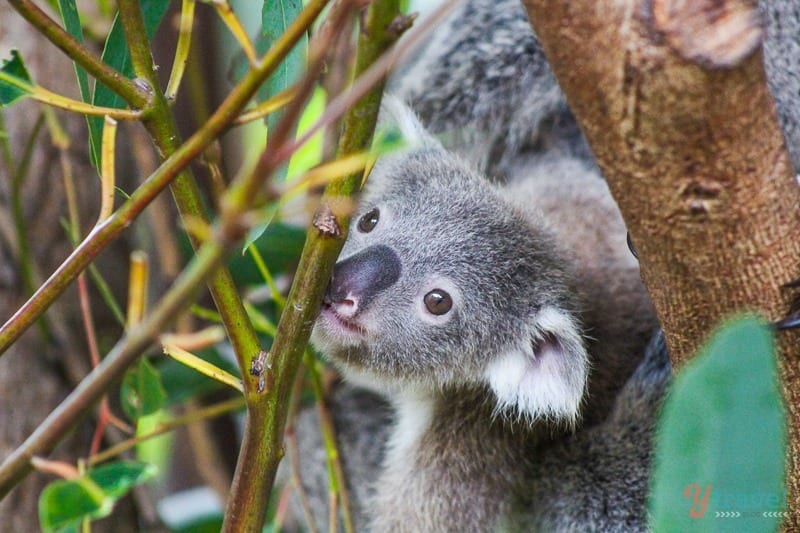 Baby koala at Australia Zoo, Queensland, Australia
Baby koala at Australia Zoo, Queensland, Australia
Video: Australia Highlights Playlist
Watch the following videos to see what exploring Australia looks like!
More Australia Planning Tips
Need more help planning your trip to Australia? Start with these resources…
Pin To Save It On Pinterest
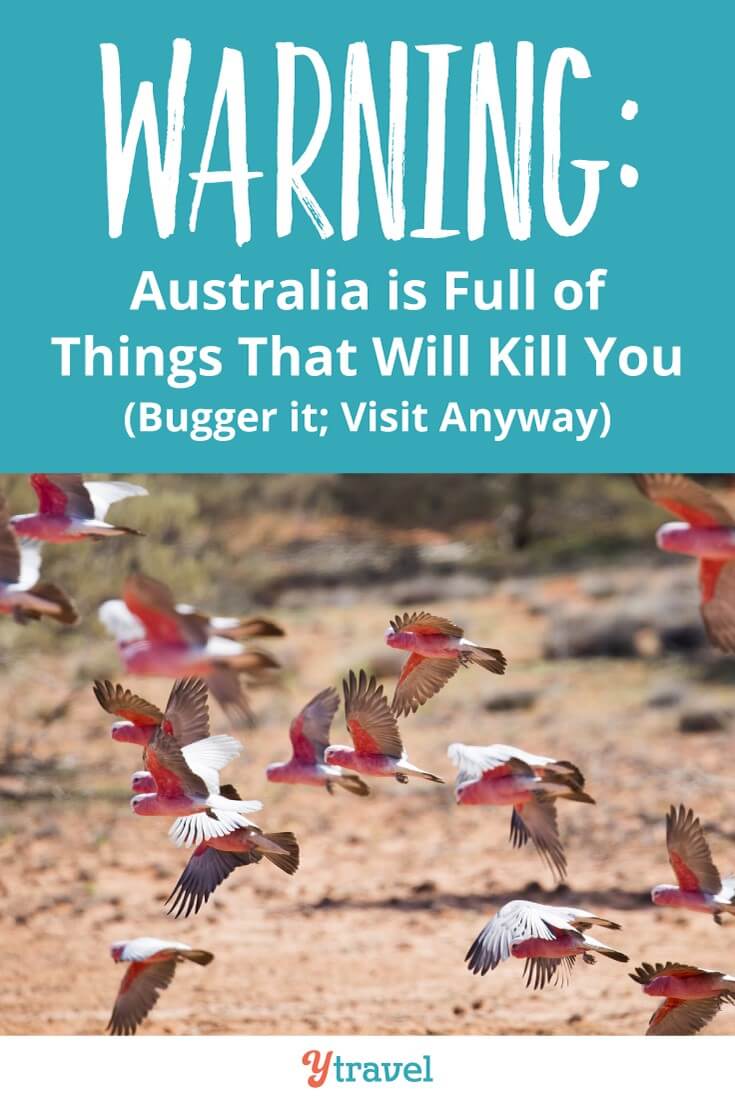
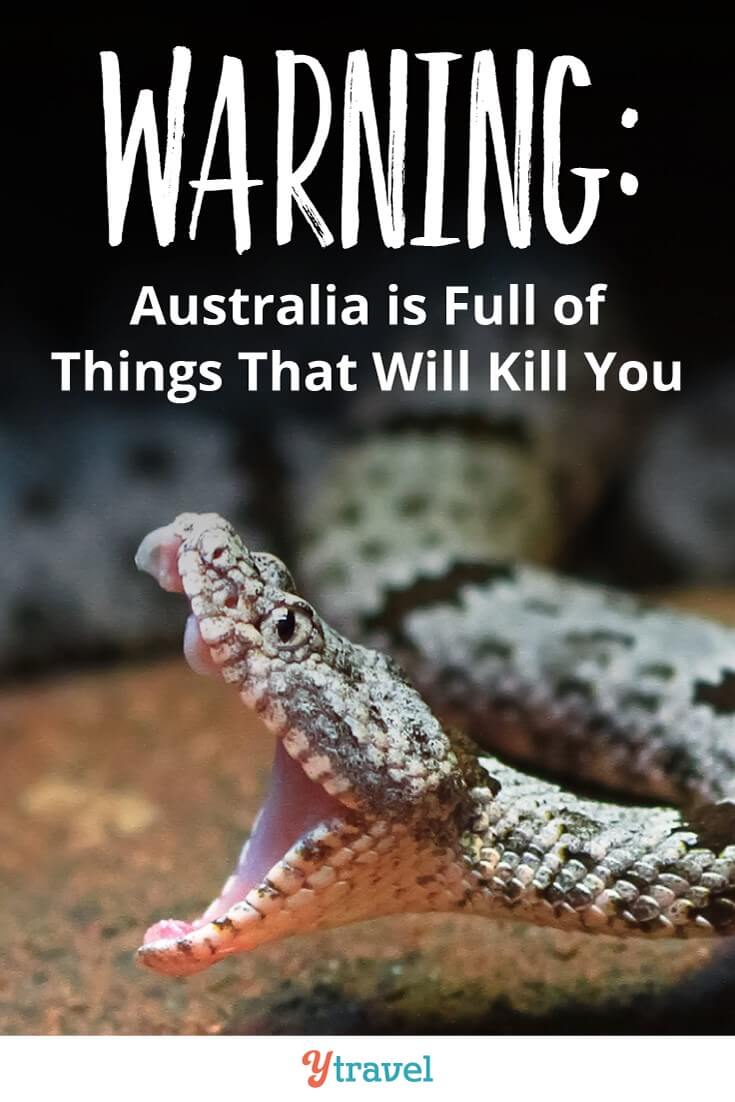
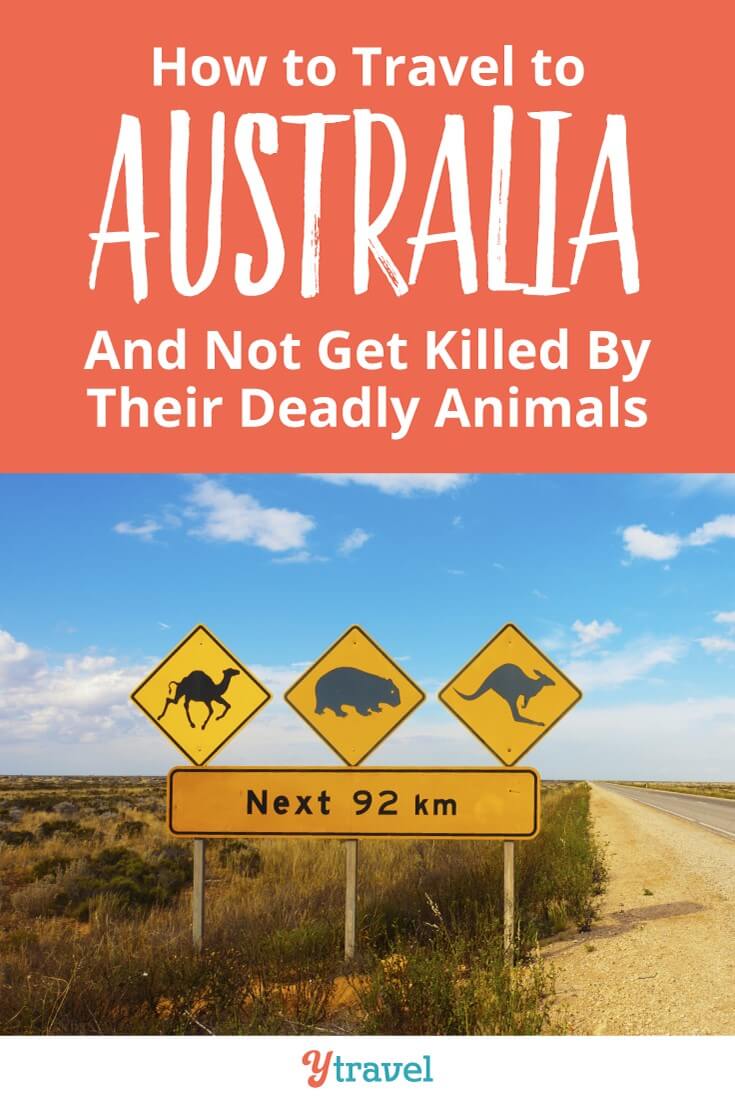
Are you afraid of Australia’s deadly animals? What do you think now you’ve read our guide? Let us know in the comments.
Източник за тази статия
Наши спонсори са:
Български трактори на добри цени при изключително качество




